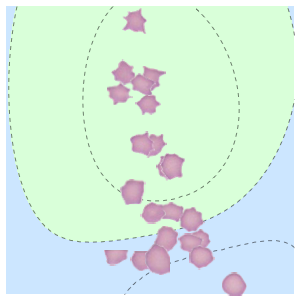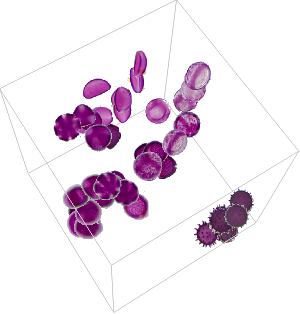Classify Cells Using Support Vector Machines
This example looks at red blood cells and classifies normal cells from burr cells by training a support vector machine. Burr cells or echinocytes have abnormal membrane characterized by many small, evenly spaced thorny projections.
Separation of foreground and background as outlined in the morphology example.
Perform a morphological segmentation.
Create a small training set for supervised learning.
Click interactively on some red blood cells that you deem regular and retrieve their index locations.
Derive the corresponding segment indices.
Display the selected blood cells.
Click on some burr cells and retrieve their index locations.
Create a feature vector for each segment consisting of segment area and spikiness.
Generate a small training dataset for burr cell classification.
Train a linear support vector machine (SVM) as classifier.
Display the probability distribution of each class in feature space.
Classify all remaining burr cells.
Highlight all burr cells in the image.
Visualize the cell classification in feature space.


























